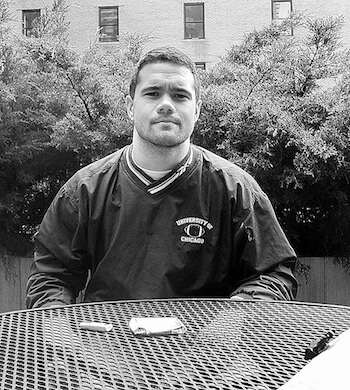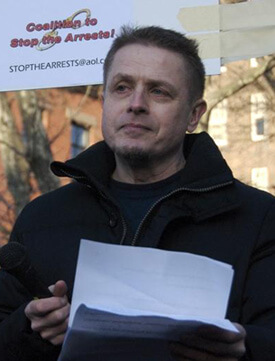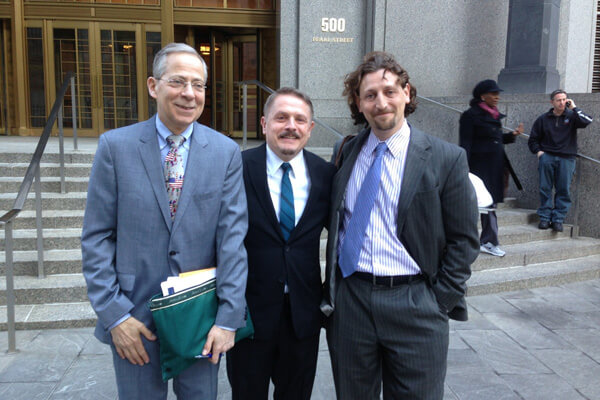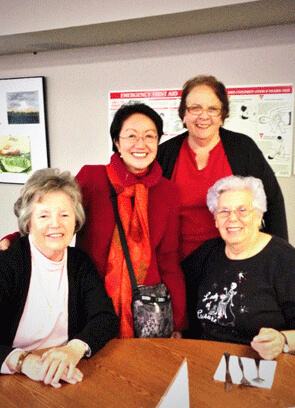The city’s new marijuana policy is a good thing, but it is probably best thought of as just a chapter in a book not yet completed.
Donna Lieberman cut to the nub. “New Yorkers need to know if the NYPD is finally ending its marijuana crusade” or simply “shifting tactics,” the executive director of the New York Civil Liberties observed in a wait-and-see Daily News op ed.
First, give credit to Mayor Bill de Blasio. After Queens College sociology professor Harry Levine let the cat out of the bag with his report that marijuana arrests had increased since he took office, that New York’s police had in fact stepped up enforcement, the mayor was faced with a credibility problem given his campaign promises of last year. An out gay freshman City Council member from the Bronx, Ritchie Torres, got the ball rolling on a sign-in letter from his colleagues demanding a change in policy. The mayor stepped up, keeping his word and telling the police, “No more.”
The Long View
That’s more than Mayors Rudy Giuliani and Michael Bloomberg did when confronted with the same basic picture: people of color committed a crime when holding marijuana, while white people didn’t get caught. The two former mayors resisted change for 20 years. De Blasio made a major change happen in his first year.
It has taken years to drive home into the public’s consciousness the disparities created by marijuana arrests, but editorial writers have of late been calling for action. The mayor pushed and a long-standing house of cards fell. The police agreed they should no longer make a criminal case for marijuana possession.
Sunday’s New York Times, in a remarkably savvy article, laid out the advantages and the pitfalls in these first steps. One of its revelations involved the stellar results achieved recently by Brooklyn’s new district attorney in his approach to marijuana. Ken Thompson’s prosecutors have dismissed 849 cases, or 34 percent of the marijuana busts in the borough.
Dismissal is the key word here. It means the person stopped by the police is done — not only no record but also no days missed from work to fight a fine. The summons plan announced by the mayor and the borough district attorneys may not include this approach. Anybody who has gotten a summons for littering or walking in a park after curfew knows it is well nigh impossible to get the city to dismiss tickets.
Brooklyn’s Thompson, who is emerging as a good guy on law enforcement issues, told the Times he was worried that by ticketing marijuana offenders, prosecutors will no longer have the leeway to simply dismiss cases outright.
The New York Post editors took a swipe at the Brooklyn DA, saying the new city policy has a “bonus” — it “effectively cuts Thompson out — and deprives him of an anti-cop issue he can campaign on.”
But even in the conservative precincts of Staten Island, the need to solve the problem of ballooning pot busts was clear. The DA there, Dan Donovan, is pleased that the criminal courts will no longer be congested with all those arrests. Anyone fighting a marijuana ticket will go to the Summons Court in Lower Manhattan.
Police Commissioner Bill Bratton, not wishing to come off as a law-and-order dove, insisted the police will write tickets. “It’s still against the law,” he told the Daily News. “I’m not giving out get-out-of-jail-for-free cards.”
In New York City, pot remains illegal, but people will no longer be fingerprinted and labeled criminals. Only time will tell if this works. The $100 fine could pose a major burden for young people from communities of color, who are likely to bear the bulk of the summonses as they have the arrests. Failure to respond to a summons — by paying the fine or appearing in court — can lead to an arrest and fingerprinting.
It’s possible that a significant burden is being shifted to the Summons Court judges, who will be subject to an unusual level of scrutiny.
A majority of Americans now support taxed and regulated marijuana. Despite de Blasio’s move in the right direction, the city is still behind the curve. And tensions between law enforcement and significant segments of the public remain.


































